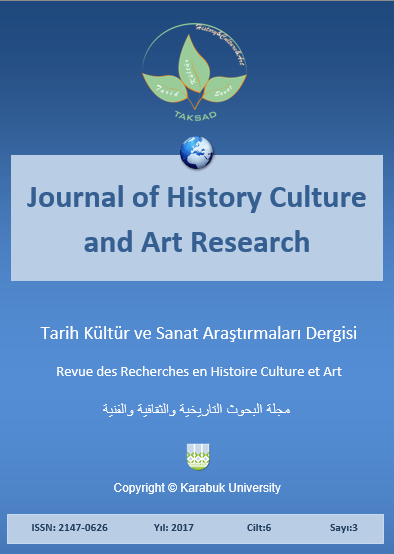Investigation of Strategies to Improve the Quality of International Exhibitions with Smart Technology Approach
DOI:
https://doi.org/10.7596/taksad.v6i3.960Keywords:
Exhibition, Intelligent buildings, Good physical conditions, Visitors.Abstract
The study seeks to do a pathological process for Tehran exhibition spaces and provide a solution for responsive space design to meet the needs of international exhibition by looking at the phenomenon of smart building. In this study, after examining the problems associated with existing and potential obstacles, it has been tried to design an appropriate space by using smart technology through explaining the available criteria and standards for exhibition space and also reviewing and analyzing successful examples of internal and external contexts and putting together the important indicators in an suitable and at the same time an economic attractive and ideal environment for users and comparison with the current situations and defects, which seems that besides preserving and conserving energy at high-traffic public places, provides a good physical condition for visitors.
Localization and solving defects and possible barriers to hold exhibitions in order to attract more domestic and foreign audiences and promoting areas of mass communication are other objectives of this research. In order to perform the various stages of the thesis, we firstly describe, analyze and understand the current situation and then determine an outlook of ideal conditions and finally employ the result to design the space according to the exhibition space standards based on smart technology.
References
Abdoli, M. (2013). Energy for sustainable development. Tour specialist database magazines, Energy Economics. No. 62. Summer 0831.
Akbari, H. (2008). Sustainable architecture will require its tools and materials, smart glass facades, Melli Etemad, No. 833.
Akhtarkavan, M. & Sadiq, M. (2012). Setting the ecological and climatic conditions in harmony with the ecology and climate of Iran, Kalhoor Press.
Casini, M. (2016). Smart Buildings: Advanced Materials and Nanotechnology to Improve Energy Efficiency and Environmental Performance, Woodhead. pp. 55-104.
Eugeny I. B. (2015). The Distinctive Features of “Smart” Buildings. Procedia Engineering journal. Vol. 111, pp. 103-107.
Kasmaee, M. (2012). The climate of Architecture, Baztab Press.
Lois A. R. & Valerie, M. (2007). Systematic planning for using an on line survey, Wiley on line library, issue 115.
Moslehi, M. (2011). Living beyond smart windows. Jamejam Magazine. No. 612.
Michelle, A. & Schodek, D. (2005). Smart materials and new technologies for architecture and design prifessions, Architectural press.
Shengwei, Wa. (2009). Intelligent Buildings and Building Automation. Published by Routledge, 1th Issue.
Volkov, A. A. (2013). Building Intelligence Quotient: mathematical description, Applied Mechanics and Materials. (Trans Tech Publications, Switzerland). Vol. 409-410 (2013). pp. 392-395.
Zeeshan, A. & Mujtaba, A. (2011). Smart House: Artificially Intelligent Home Automation System, VDM Verlag Dr. Müller Publication.
Downloads
Published
How to Cite
Issue
Section
License
All papers licensed under Creative Commons 4.0 CC-BY.- Share — copy and redistribute the material in any medium or format
- Adapt — remix, transform, and build upon the material for any purpose, even commercially.
Under the following terms:
Attribution — You must give appropriate credit, provide a link to the license, and indicate if changes were made. You may do so in any reasonable manner, but not in any way that suggests the licensor endorses you or your use.
- No additional restrictions — You may not apply legal terms or technological measures that legally restrict others from doing anything the license permits.







